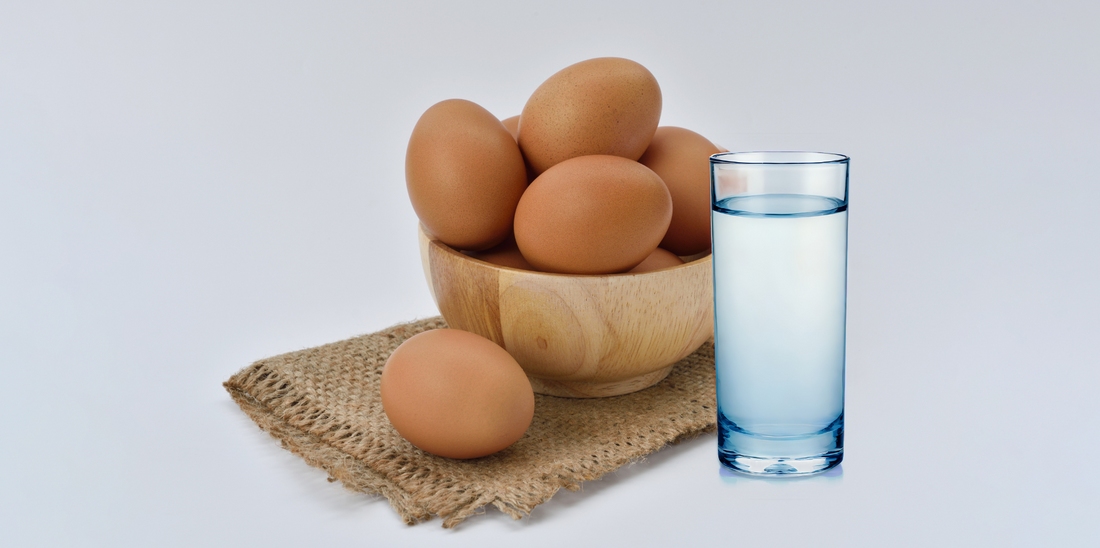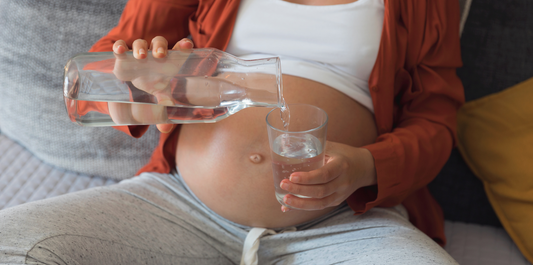Du baust dein eigenes Gemüse an, hältst Hühner im Garten. Vielleicht bäckst du sogar Kuchen von Grund auf. Es ist ein Lebensstil, der auf Gesundheit und Nachhaltigkeit beruht. Doch jüngste Berichte aus den Niederlanden werfen einen Schatten auf diese Bemühungen. Bei selbstgezogenen Eiern, die einst als gesundes Grundnahrungsmittel galten, wurden hohe Konzentrationen von PFAS, den so genannten "ewigen Chemikalien", festgestellt.
Vom Hühnerstall bis zum Wasserhahn: die weite Verbreitung von PFAS
PFAS (per- und polyfluorierte Alkylverbindungen) sind eine Gruppe von künstlich hergestellten Chemikalien, die in Alltagsprodukten wie wasserdichten Jacken, Lebensmittelverpackungen und antihaftbeschichteten Kochpannen verwendet werden. Das Problem dabei? Diese Stoffe werden in der Natur nicht abgebaut. Sie verbleiben in unserem Boden, unserem Wasser - und zunehmend auch in unseren Lebensmitteln.
Eine Untersuchung des RIVM (Niederländisches Nationales Institut für Volksgesundheit und Umwelt) ergab bei mehr als der Hälfte der getesteten Standorte erhöhte PFAS-Werte in selbstgezogenen Eiern. In einigen Gebieten könnte der Verzehr von nur einem einzigen Ei pro Woche dazu führen, dass Erwachsene den empfohlenen Grenzwert für die PFAS-Aufnahme überschreiten.
Aber dies geschiet nicht nur mit Eiern: Dieselben Studien weisen auf PFAS im Trinkwasser hin, die die chemische Gesamtbelastung in unserem Körper erhöhen. Und während die PFAS-Werte im Leitungswasser in der Regel innerhalb der offiziellen Sicherheitsrichtlinien liegen, kann die kombinierte Belastung durch Wasser und Lebensmittel die von der Europäischen Behörde für Lebensmittelsicherheit (EFSA) festgelegten Grenzwerte überschreiten.
Zudem hat eine separate Studie, durchgeführt vom Pesticide Action Network Europe, alarmierend hohe Konzentrationen von PFAS—insbesondere Trifluoressigsäure (TFA)—in europäischen Weinen festgestellt, insbesondere bei Jahrgängen nach 2010. Dies unterstreicht erneut die weit verbreitete und zunehmende Verunreinigung von Lebensmitteln und Getränken.
Die wahren Folgen der PFAS-Belastung
Die potenziellen Gesundheitsrisiken, die von PFAS ausgehen, können nicht hoch genug eingeschätzt werden. Diese Chemikalien verbleiben im Körper und werden mit einer Reihe von ernsthaften Gesundheitsproblemen in Verbindung gebracht:
- Krebs: Die Exposition gegenüber PFAS wurde mit einem erhöhten Risiko für Nieren-, Hoden- und möglicherweise Brustkrebs in Verbindung gebracht.
- Fruchtbarkeit und Auswirkungen auf die Entwicklung: PFAS können die Fruchtbarkeit beeinträchtigen und zu niedrigem Geburtsgewicht und Entwicklungsverzögerungen von Kindern beitragen.
- Auswirkungen auf das Immunsystem: Diese Chemikalien können die körpereigene Abwehr gegen Infektionen schwächen und die Wirksamkeit von Impfstoffen vermindern.
- Störungen der Schilddrüse und Leber: PFAS können den Hormonspiegel beeinträchtigen und wurden sowohl in Tier- als auch in Humanstudien mit Leberproblemen in Verbindung gebracht.
- Andere Bedenken: Studien haben höhere Cholesterinwerte, Blutdruckkomplikationen während der Schwangerschaft und Stoffwechselveränderungen im Zusammenhang mit PFAS-Exposition festgestellt.
Was Europa tut - und warum es noch nicht genug ist
Mit zunehmender öffentlicher Besorgnis wächst auch das Interesse an regulatorischen Maßnahmen. Die Europäische Chemikalienagentur (ECHA) prüft derzeit eine kontinentweite Beschränkung für PFAS, um die Exposition zu verringern und unnötige Verwendungen auslaufen zu lassen. In der Zwischenzeit geben lokale Regierungen, auch in den Niederlanden, neue Sicherheitshinweise heraus. Das RIVM beispielsweise empfiehlt nun, in bestimmten Gebieten auf Eier von Hobbyhühnern zu verzichten.
Trotz dieser Bemühungen ist es nach wie vor schwierig, PFAS aus der Umwelt zu entfernen. Es wird Zeit brauchen - und in der Zwischenzeit müssen Haushalte überlegen, was sie jetzt tun können.
Was ist mit dem Wasser, das du jeden Tag trinkst?
Das RIVM erklärt weiterhin, dass Leitungswasser sicher zu trinken ist. Es räumt jedoch auch ein, dass eine kumulative PFAS-Belastung - insbesondere durch Ernährung und langfristigen Wasserkonsum - ein Gesundheitsrisiko darstellen kann. Das Abkochen von Wasser beseitigt PFAS nicht. Und abgefülltes Wasser mag zwar weniger enthalten, ist aber weder praktisch noch nachhaltig.
PFAS-Konzentrationen sind oft höher in Wasser aus Flüssen und Seen als in Grundwasser. Das liegt daran, dass Oberflächenwasser stärker mit PFAS-kontaminierten Abwässern aus Industrieanlagen und Konsumgütern belastet ist. Auch Grundwasser ist nicht immun, obwohl es in der Regel sicherer ist.
AquaTru: Filterung von PFAS mit nachgewiesenen Ergebnissen

Wenn du über PFAS in deinem Leitungswasser besorgt bist, gibt es eine zuverlässige Lösung: Das 4-stufige Umkehrosmose-Filtersystem von AquaTru wurde von unabhängig getestet und zertifiziert, um bis zu 99 % aller Schadstoffe zu entfernen - einschließlich PFAS.
- Innovative Filtration: reduziert effektiv PFAS, Arzneimittelrückstände, Blei, Fluorid, Mikroplastik und mehr.
- IAPMO-zertifiziert: Erfüllt die NSF/ANSI-Normen für die Wasserfiltrationsleistung.
- Nachhaltige Wahl: Reduziert die Abhängigkeit von abgefülltem Wasser und verringert damit Plastikmüll.
Der AquaTru-Vorteil: Transparenz in jedem Tropfen
AquaTru verspricht nicht nur Ergebnisse - wir weisen sie auchnach. Unsere Leistungsdatenblätter zeigen deutlich die Reduktionsraten für die wichtigsten Verunreinigungen auf:
- Gelöste Feststoffe (TDS): reduziert den TDS-Wert um bis zu 97 %, was zu klarem, frischer schmeckendem Wasser führt.
- Mikroplastik: Beseitigt mehr als 96 % der Partikel, die bis zu 0,5 Mikrometer klein sind, und schützt so vor Verunreinigungen, die du nicht sehen kannst.
- pH-Balance: hält den optimalen pH-Wert des Trinkwassers aufrecht und sorgt dafür, dass es sicher und angenehm zu trinken bleibt.

Angesichts der Schlagzeilen, die PFAS in ganz Europa machen, war es noch nie so wichtig, Maßnahmen zum Schutz Ihres Trinkwassers zu ergreifen. Lade unser Leistungsdatenblatt herunter, um zu sehen, wie AquaTru abschneidet. Stell dann auf besseres Wasser um - denn sauber sollte wirklich sauber bedeuten.




